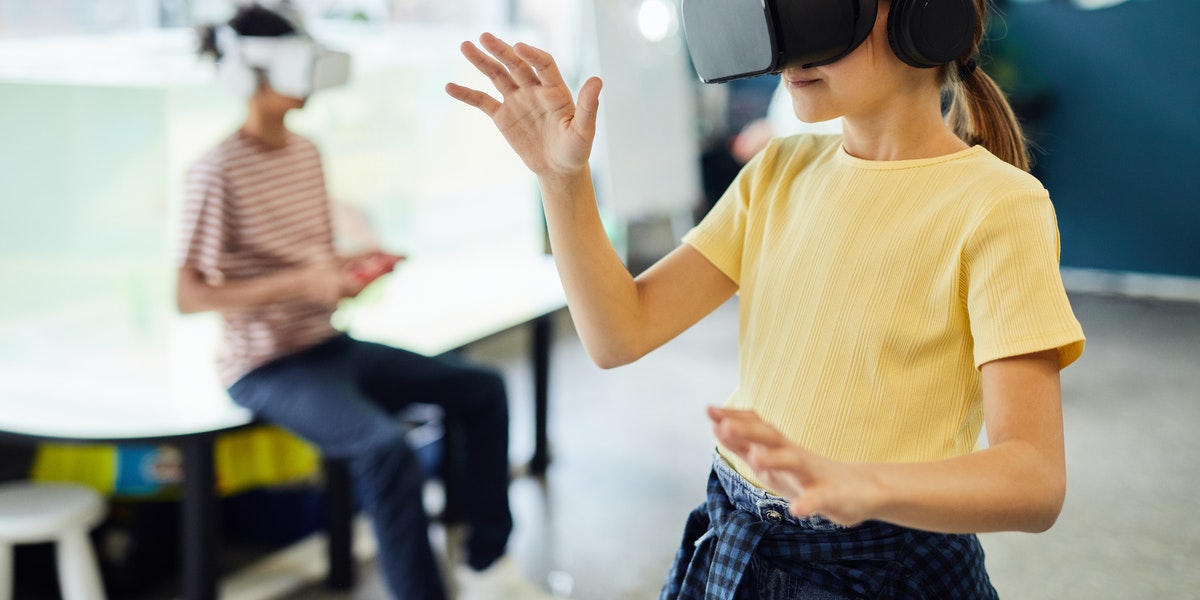
How Virtual Reality Can Help Students Meet Learning Goals?
- By Gerald Nelson
- 04-03-2022
- Virtual Reality
Virtual reality has the potential to revolutionize the way we learn and teach by providing in-depth knowledge and assisting us in comprehending complex subjects. It also facilitates language immersion and virtual trips.
Students learn in a more engaging environment and have a life-changing experience. They are liberated from the burden of having to deal with others through direct interactions. They develop great skills over time. This turns out to be a very fruitful experience.
5 Best Ways by Which Virtual Reality Can Help Students Meet Learning Goals
Check out the most effective learning methods that VR has brought so far:
1. By Conducting Virtual Field Trips
Virtual field trips have become a very popular use of VR technology in the field of education. Many schools have now turned into Google Expeditions to transfer pupils to unreachable corners of the globe. The Google Expedition App can be downloaded free on iOS or Android. Some of the low-cost headsets can be brought which may then be hooked to a smartphone.
The students get access to great knowledge and they can then explore anything. Such kinds of online learning sessions are quite beneficial for pupils and help them achieve their learning objectives.
2. Learning Activity through Games
Virtual reality will almost certainly revolutionize the way games are used to teach. Game-based learning is effective because it boosts motivation and engagement. With the help of virtual reality, this goes to the next level. Students not only enjoy such games but it also impacts their learning ability. It does not put pressure on students through any judgmental remarks.
The students become more active while learning playfully. Many of their skills are polished and they become smarter. With a minimal investment of time, a lot can be accomplished.
3. Immersion in a Foreign Language
Students are motivated to learn a foreign language when they are immersed in it completely. Students can now study new languages without needing to travel abroad thanks to virtual immersion. These simulations may deceive the brain into believing that some experiences are real. Unimersiy is an app that assists students in learning and communicating in a variety of languages.
These virtual workshops allow students from all over the world to share their experiences. It helps them gain confidence and a better understanding of how to use different terminology in a new language.
4. Enhanced Mutual Collaboration
Virtual and augmented reality simulations have been shown to promote student motivation, teamwork, and knowledge building. Teachers can plan, produce and use collaborative activities for exchanging students in the virtual world to explore and debate on various cultures in different languages. It strengthens the bond between pupils and instructors and increases their interest.
It reduces the hesitation among students which they may face in the real environment. Their social relations are improved to a greater degree and students feel more comfortable sharing their views.
5. Sparking Creativity Through VR
Virtual reality technology is also being used in schools to spark students' creativity and keep them engaged, particularly in architecture and design. The Oculus Rift hardware allows architects to take computer-generated 3D models and place viewers inside them to bring their plans to life.
Such activities are quite effective in making the online experience feel real so the pupils learn greatly. The way designs appear catchy through the virtual medium encourages students to improve their techniques.
Conclusion
The scope of virtual learning has expanded dramatically over the last few years. The amazing 3D models that fascinate students have raised the bar for education. Students enjoy interacting with others in a virtual setting where they can improve their skills and become smarter.
Recent blog
.jpg)
Native vs Cross-Platform Apps: Which One Should You Pick
Mobile App Development | 18-09-2025
AI-Powered Caregiver Matching for Better Home Care in 2025
Artificial Intelligence | 17-09-2025.jpg)




